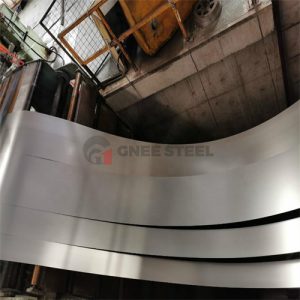Silicon Steel

Grain Oriented Electrical Steel Cold Rolled Silicon Steel coil for Transformer Core Plate
The difference between oriented silicon steel and non-oriented silicon steel: Non-oriented silicon steel: ferrosilicon alloy with very low carbon content. In the deformed and annealed steel shee...
DESCRIPTION
The difference between oriented silicon steel and non-oriented silicon steel:
Non-oriented silicon steel: ferrosilicon alloy with very low carbon content. In the deformed and annealed steel sheet, its grains are distributed randomly. The silicon content of the alloy is 1.5% to 3.0%, or the sum of the silicon and aluminum content is 1.8% to 4.0%. The products are usually cold-rolled plates or strips, which are mainly used to manufacture motors and generators.
Oriented silicon steel: It has strong directionality, the lowest iron loss value in the rolling direction, the highest magnetic permeability, and a higher magnetic induction value under a certain magnetization field. The silicon content of oriented silicon steel is about 3%. It also requires a low content of oxide inclusions in the steel and must contain certain in hibitors.
|
Grade
|
Grain Oriented Electrical Steel:
JIS : 23R090, 27R095, 30G130
ASTM : 23Q054, 27Q057, 30H083
EN : M85-23Pb, M090-27Pb, M130-30S
Non Oriented Electrical Steel:
JIS : 35A210, 50A250, 65A310
ASTM : 36F145, 47F165, 64F200
EN : M210-35A, M250-50A, M310-65A
|
|
Coil width
|
30-1250mm
|
|
Width accuracy
|
-0.1-0mm
|
|
Burr
|
<0.02mm
|
|
Straightness
|
<0.1mm/2000mm
|
|
Flatness
|
±0.1mm
|
|
Single coil weight
|
≤5 ton
|
Our Email: info@gescosteel.com.







